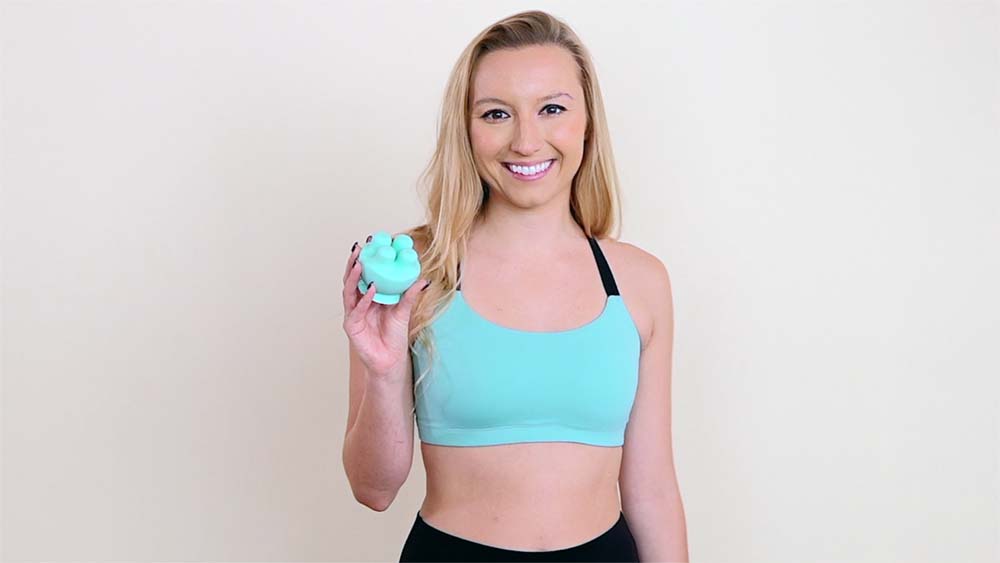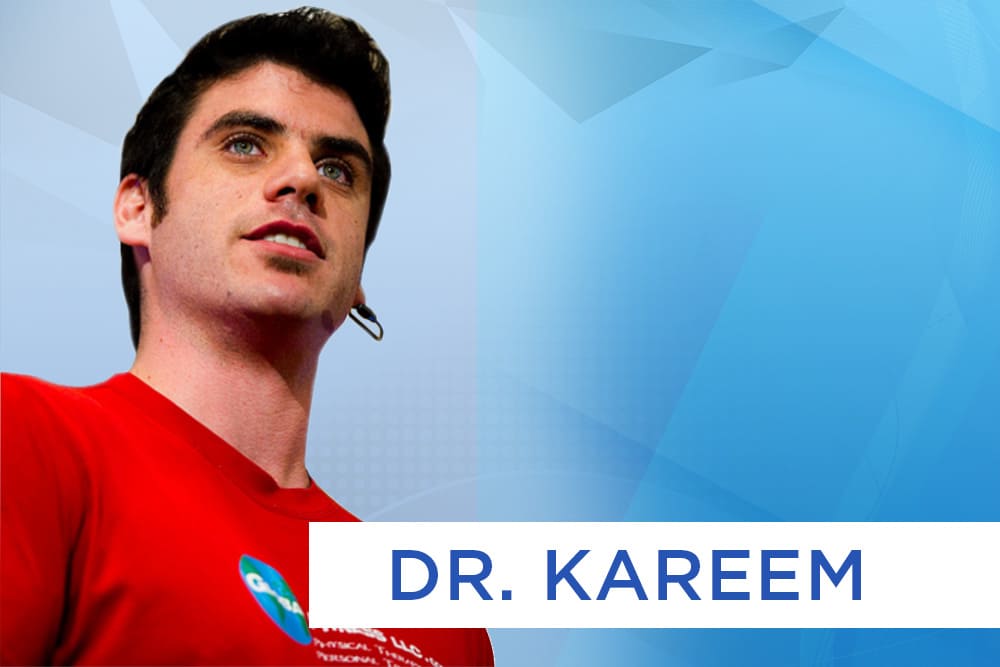Unusual perspective on how to build muscle without sacrificing lifestyle…
Muscle building exercise theories vary from emphasizing only one muscle group per day or per workout, all the way to doing Turkish Get-Ups as your entire program. I’ve heard it all, and there’s merit in ‘almost’ all of it. The fact is, stress your muscles and they will grow; ‘stressing’ them means that you are taking them just past their failure point, and gaining either:
1.) Muscular endurance or
2.) Muscular strength
More muscle is your natural adaptation response when you take muscle just past it’s physiological threshold. The question is between muscular endurance (slow twitch muscle fibers) and muscular strength (medium and fast twitch muscle fibers.)
Generally speaking, if you perform greater than 8 reps of an exercise, you’re in the muscular endurance zone. There are plenty of exceptions to this when it comes to burnout sets, synergistic sets, and a bunch of other things that sound complicated but really are not. We’ll talk more about those in a moment…
When you want to build muscular strength, you’ll need to keep your repetitions low (8 or less), and keep your rest breaks long (2-5 minutes before repeating this muscle group.) By forcing your muscle to quickly and fully exert itself a few times until it is exhausted, your body identifies that you were attempting to lift something too heavy, and it grows bigger muscles to help you get it the next time. In other words, it pulls the quickest energy source, sugar, and demands energy from it right away. When it runs out, your body builds more sugar-consuming muscle fibers so that you can lift more weight the next time.
On the other hand, by repeatedly being able to do something, but running out of gas after 25 or 30 repetitions, your body identifies that it needs to get better at ‘pacing’ itself, so it builds more muscle fibers that thrive on oxygen; this way, your body can stop your muscle from ‘getting out of breath’ for awhile longer.
- Muscular endurance is great for running marathons.
- These are slow-twitch muscle fibers.
- Muscular strength is great for ‘building muscle.’
- These are fast-twitch muscle fibers.
Converting Muscle Fiber Type:
So, if the goal is to pack on some extra muscle, you’re going to need to either work with the muscle fibers you’ve got, or convert as many of them over to medium twitch as possible. Unfortunately, there’s nothing you can do about the number of fast-twitch muscle fibers you have, although you may want to pick your parents better next time 🙂
Slow muscle fibers (endurance) can be converted to medium (consumes both energy sources, oxygen and sugar), and fast twitch (sugar consumers) can also be converted to medium.
Converting fast-twitch muscle fibers to medium twitch is never a good idea if your goal is to get lean or build muscle.
It’s very hard to switch back.
As a result, you’ll want to always incorporate some fast-paced strength training as a part of your workout program, independent of the periodization phase you are following. Even part of a workout every 2 weeks is enough to maintain muscle fiber type.
Conversely, once you change muscle fiber type over from slow-twitch to medium-twitch, do your best to preserve this metamorphosis. Continue this form of training for at least six weeks to stabilize the switch.
Preservation of Muscle Fiber Type:
This is where things can really take off and start to accelerate your results. Instead of looking at ‘burnout’ sets as an opportunity to burn everything ‘left’ in your muscle, look at them as an opportunity to preserve fast and medium-twitch muscle fibers. So, sprint through these reps, cleanly keeping form, and stop when you slow down.
Pretty simple, huh?
Exceptions, Muscle Building Secrets, & Set Variety:
The rules listed above are correct, but with any good science, we learn of new and innovative ways to produce results. Then, we do our best to explain them with new areas of research. As a clinical Doctor of Physical Therapy (DPT), it’s my job to observe what’s happening clinically, read any studies that support this, or convey my findings for others to start performing the studies. Furthermore, I believe it’s my job to discover new methods.
In my opinion, research is lacking in most of the exceptions listed below, or it could at least be done much better to offer scientific proof. Many of these techniques I’ve borrowed from others’ ideas, and some of them I’ve created on my own. From the training floor, we know these work:
- Reciprocal Inhibition Supersets & Giant Sets
Reciprocal Inhibition is the concept that suggests when you use one muscle group, the neurological signal to the opposite muscle group is turned off, temporarily. So, in the case of wanting to exert as much effort as possible through a muscle contraction, it stands to argue that following every ‘strength’ exercise, you can use the opposite muscle group to ‘turn-off’ the signal to the muscle you have just worked. Thereby, you’ll get more from each of the following sets.
Superset Example: Biceps Curls (strength set) x 6 reps, followed by Assisted Dips x 25 reps as your rest period, then repeating Biceps Curls.
- Angular Supersets & Giant Sets
Angular supersets (2 exercises back to back) and Giant Sets (3-5 exercises in a row, without rest) are extremely useful for muscle groups that have multiple actions or a large variety of muscle fiber direction. For example, your pecs have three muscle actions: internally rotate shoulder/arm, aDduct your shoulder/arm, and flex your shoulder/arm in front of you.
Each muscle action has corresponding muscle fibers that are directionally-oriented such that when they shorten, the muscle action is performed. So, there are certain positions that work well to get almost every muscle fiber, but they often miss others at the same time.
Likewise, other exercises are really only meant for one section of one action of a muscle, like Bench Press. This is really only doing a good job of getting the middle and outside regions of your pec, but not necessarily the upper, lower, or inner.
Angular supersets and giant sets can be used to get the ‘missing’ sections of the muscle from an exercise, thereby increasing the number of reps you’re doing, but not necessarily for the ‘missing’ muscle areas.
- Synergistic Supersets & Giant Sets
Synergistic muscle groups are muscle groups that work together to perform a common movement. An easy example to envision would be your lats (on your back) and biceps. In order to perform a pull up, you have to use your lats to pull yourself up, but your elbows are bending at the same time, so that’s your biceps. These muscles are working together, or synergistically.
Since it’s very difficult to do a strength-based pull up set without getting your biceps involved, anyway, it makes sense to finish off the work you’ve been doing. So, biceps, and related muscles, are next in line, and without a rest break. Cumulatively, this adds up to more than 8 reps for your biceps (say 6 pull ups + 6 biceps curls = 12 reps for your biceps.)
On other days, you’ll want to work your biceps first, even though you’ll sacrifice pull up strength. This way, you can hit a lower number of overall reps and cause faster muscle growth to take place.
This type of set is important and relative for all closed-chain exercises, or exercises that look like squats, push ups, pull ups, and lunges; exercises where your hands or feet are fixed and your body is moving towards them.
- Pyramid and Reverse Pyramid Sets
This is where you start with a single rep of an exercise or movement, and then you do two reps, then three, etc. Often times, the rest breaks are minimal, or you are doing 2 or 3 exercises in a row before proceeding to the next rep range.
Naturally, you are doing many more cumulative reps than 3 sets of 8 reps, but you are allowing short rest breaks in between. This requires both endurance and strength, so it’s beneficial for medium-twitch muscle fibers more than anything else.
- “Twitch” Sets
“Twitch” Sets are used for purposeful selection of movement speed for the targeting a particular muscle fiber type. In other words, this is another form of muscle balancing, in that you are specifically targeting all muscle fibers your ‘strength’ program might be missing. So you’re taking time out to work on the ‘rest’ of your muscle by working muscular endurance back into the picture, but only for a portion of your workout.
Here, you are generally using these 3 speeds:
- Superslow Method – 10 seconds, both directions
- Normal Speed – 2 seconds concentric, 1 second isometric, 4 seconds eccentric
- Sprint Sets – as fast as you can go, cleanly and with good form
- Power-based Movements
Power-based movements are incredible for building strength, especially functional strength that requires the use of your core to succeed with the movement. By slowly loading your muscle (eccentrically) and then exploding against gravity (concentrically), you are teaching your muscle how to generate massive amounts of work in a very short period of time.
This is great for building muscle, but it comes with some inherent risk. If you are not an athlete and you’re not doing this for sport, it’s generally better to stay in the higher rep range and decrease your weight significantly. Aim for 12-15 reps, and sacrifice a bit of speed in muscle development for safety. You are already biasing your fastest-twitch fibers, so you’re good to go.
Likewise, certain muscles in your body aren’t meant to get huge. For example, movements that require back stability are often, at least in part, endurance-based movements. For example, power-based pull ups are functional to do at a higher rep range, as this is pulling your bodyweight quickly. Think about this functionally — do you really ever have to pull more than your bodyweight quickly? If you do, you should train lower reps, but if you don’t, you have your answer.
- Plyometrics for the Non-Athlete
Plyometrics are bodyweight exercises that work on reaction speed and muscle timing. Muscle timing, in this sense, is the ability to fire opposite muscle phases, back and forth, as quickly as possible. For example, as you load your quads eccentrically when you land from a jump, how quickly can you get back off the ground, or use your quads concentrically?
The faster you can change the phase of muscle contraction, the more you are biasing the fastest-twitch muscle fibers that you have. The goal in plyometrics is to run out of steam quickly, in just a few reps, so you are only utilizing one muscle fiber type when you selectively recruit them.
This is amazing for power and athletic development, but there’s another hidden benefit here: Joint Stability.
Joint stability increases as you train plyometrically, as there are many moments when your muscles are just a tad late, and your ligaments and capsules take a small, but repeated stretch. In time, they respond by strengthening, and being able to withstand more. The end result is improved joint stability.
In the non-athlete, there’s no reason to risk injury by going absolutely as fast as you can, which would lower the number of repetitions you’d do. So, I usually recommend that you aim for 8-12 reps if you are not taking on this risk for increased performance for sport. Athletes are very well accustomed to taking on a controlled amount of risk for their sport, and they are also well adept at getting injured. If you’re just looking to build muscle or get lean, there’s no point in getting hurt…
- Tonic Muscle Groups
Your ‘true core’ is comprised of a different type of muscle tissue than other muscles in your body. These muscles have the job of stabilizing your spine and pelvis, so they need to be able to work at all times, instead of turning on and off, depending upon the action you need to perform.
‘Tonic’ muscles are postural, or ‘core’ muscles, while ‘Phasic’ muscles are reach and grab type muscles, that turn on and off repeatedly, and do so well, but they cannot sustain a maximal contraction for more than 10 seconds.
Your tonic muscles are:
- Internal Oblique
- External Oblique
- Transversus Abdominus
- Multifidus
- Psoas
- …and depending on the source you read, Quadratus Lumborum
These muscles should be trained with all phases of muscle contractions, and at all numbers of repetitions. In the case of isometrics (like a plank), work on building as much time as you can without losing form. This is the most functional way to train your ‘tonic’ musculature.
- Postural Phasic Muscles
As mentioned above, ‘Phasic’ muscles are your reach and grab muscles, as they do a great of turning on and off. Examples here might include your delts, biceps, triceps, quads, etc.
However, what about muscles like your lats, pecs, erector spinae, rotator cuff, etc.?
In these cases, your muscles are used throughout the day, but they don’t have the characteristic of tonic muscles that allow them to contract nonstop. Instead, they need to have incredible levels of muscular endurance in order to perform in real life. Simultaneously, because they are so important in daily life, they require adequate strength to perform.
Postural Phasic Muscles should be trained both high repetitions and low repetitions, but low always comes first (8 or less). You can alternate days, or you can choose to always superset with high rep based, multiple speed-based exercises.
- Functionally-Based Exercises
At the end of the day, we’re talking about exceptions that have been tested and implemented to adapt to functional demands of daily living. This includes movements that require power, alternating motions, quick muscle recovery, or prolonged holding of posture or position. There are all sorts of functions of muscles that take place outside of the gym.
If you can think of an activity that you currently do as a part of your daily living, albeit your career or at home, and there isn’t an exercise in your routine that specifically addresses this issue, you need to add that movement to your program and train it for muscular endurance. Equally important is to add any strength-based movements to your routine that simulate activities that require you to have strength.
For example, an endurance-based daily activity you may perform:
Cleaning the cabinets – overhead position, prolonged time period holding core in this position without arching spine, simultaneously lifting moderately-weighted objects from above.
A strength-based example might be:
Landscaping. Jumping into and out of the truck to grab supplies, up to 12 times per day. In this case, that sort of propulsion-based movement that requires coordination between your upper and lower body for jumping into the truck would belong in your exercise program, but for reps, and with specific form cues. You’d do less reps of this, because you only really need to be able to do it 1-3x every time its asked of you.
Muscle Building Program Design… interested?
200 comments and I’ll put up a full post on Muscle Program Design 🙂
About Author
Dr. Kareem Samhouri
Dr. Kareem Samhour is known as (perhaps) the best Doctor of Physical Therapy & Kinesiologist on the internet. People come to him for results when other methods fail, injury gets in the way, or health situation is more complicated. Dr. Kareem Samhouri exercising In fact, he and his companies reach a combined total of 1.5 MILLION people on a daily basis to help them with their health. If you ever saw Dr. Kareem on the street and mentioned something was going on with your health, however, he would volunteer and offer to help you for free... that's the Dr. Kareem way.







